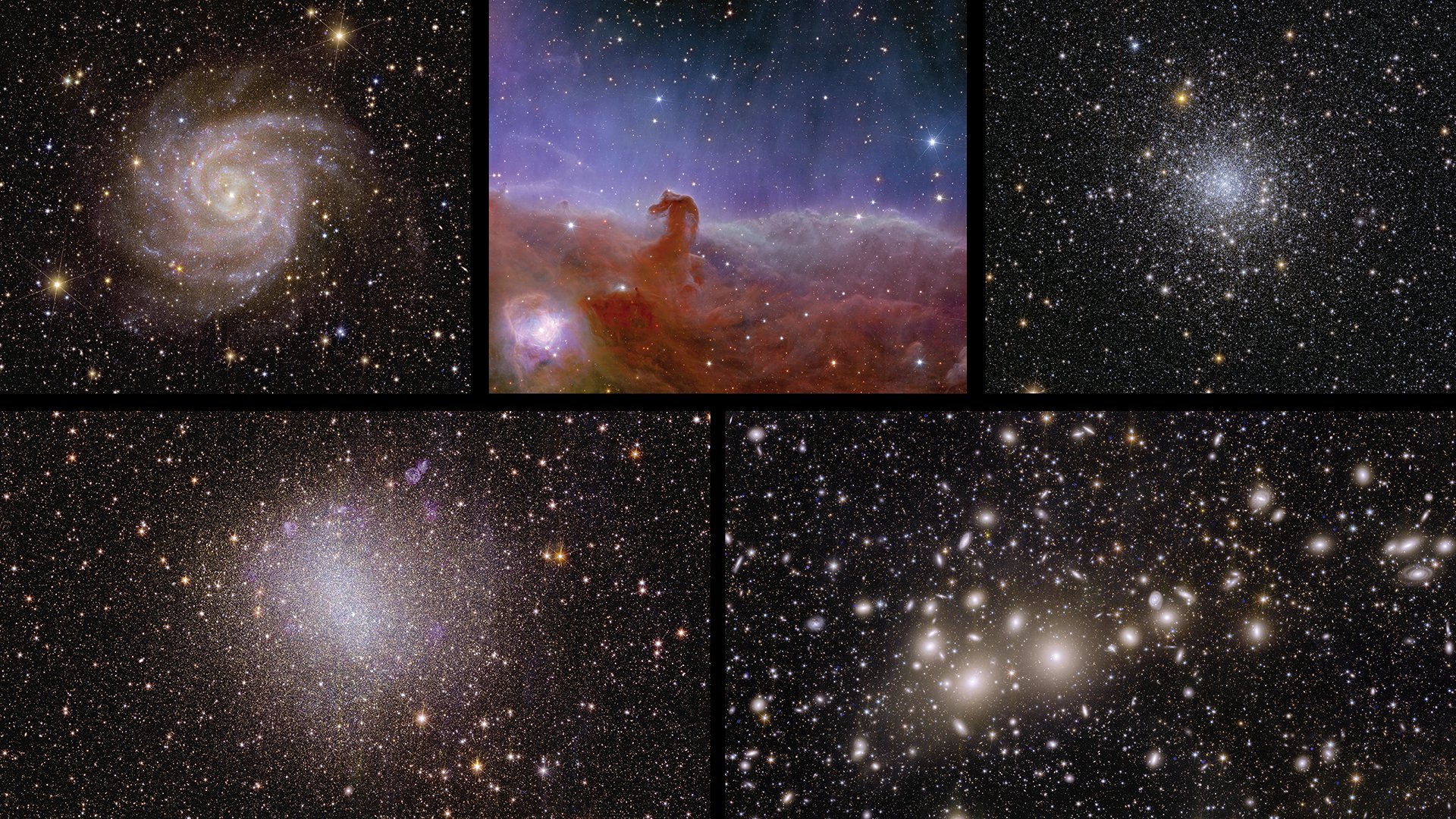Euclid space telescope releases first full-colour images of the cosmos

The European Space Agency's dark universe detective, Euclid, has revealed its first images, which show that the telescope is ready to create the largest cosmic 3D map ever made, to uncover some of its hidden secrets, the agency said on Tuesday.
The images released today feature:
- The Perseus cluster of galaxies: The Euclid image shows 1000 galaxies belonging to the Perseus galaxy cluster, and more than 100,000 additional galaxies in the background. Perseus is one of the most massive structures known in the cosmos, located 240 million light-years away from Earth.
- Spiral galaxy IC 342: IC 342 or Caldwell 5 is one of the first galaxies that Euclid observed. Nicknamed the Hidden Galaxy, it is difficult to observe because it lies behind the busy disc of our Milky Way, and so dust, gas and stars obscure our view.
- Irregular galaxy NGC 6822: Located just 1.6 million light-years from Earth, NGC 6822 is the first irregular dwarf galaxy observed by Euclid. It is the first telescope to capture the entire galaxy and its surroundings in high resolution in just one hour.
- Globular cluster NGC 6397: According to ESA, currently Euclid is the only telescope that has the ability to observe an entire globular cluster in one single observation, and at the same time distinguish so many stars in the cluster. NGC 6397 is the second-closest globular cluster to Earth, located about 7800 light-years away.
- The Horsehead Nebula: Euclid’s new observation of this stellar nursery reveals a spectacularly panoramic and detailed view of the Horsehead Nebula, also known as Barnard 33.
You can view the images and more details about them on ESA's official website.
Euclid's first images are here ✨These five images illustrate Euclid's full potential; never before has a telescope been able to create such razor-sharp images across such a large patch of the sky, and looking so far into the distant Universe.👉 https://t.co/9w2UfPREQc pic.twitter.com/Sug4drvgqs
— ESA (@esa) November 7, 2023
Euclid launched to the Sun-Earth Lagrange Point 2 on a SpaceX Falcon 9 rocket from Cape Canaveral Space Force Station in Florida in July 2023. Over six years, the telescope will study the shapes, distances and motions of billions of galaxies out to 10 billion light-years.
- READ MORE ON:
- Euclid
- Euclid telescope first images
- dark universe
- ESA










